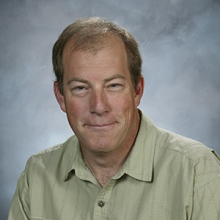-
Title
Staff Scientist/Chemist -
Email
borg5@llnl.gov -
Phone
(925) 424-5722 -
Organization
Not Available
Research Interests
Lars Borg is a cosmochemist working in the LLNL Cosmochemical & Isotopic Signatures group. His research interests include geochronology and geochemistry of samples from asteroids, the Moon, and Mars to constrain the nature and timing of processes occurring in the proto-planetary disk and planetary bodies early in the history of the solar system. In particular, he is interested in constraining the sources of nucleosynthetic materials in the nascent solar nebula using stable heavy isotopes and the defining timing of the formation and differentiation of the terrestrial planets using long- and short-lived isotopic chronometers. The research is funded through a combination of NASA and internal LLNL (LDRD) grants.
Borg’s research is also focused on nuclear forensics. This rapidly growing field uses analytical techniques to examine nuclear and other radioactive materials to determine their origin and history. Research in nuclear forensics is complementary to cosmochemical research, facilitating the co-development of each field.
Committees Served
- National Academy of Sciences NASA Planetary Sciences and Astrobiology Decadal Survey Steering Group
- NASA Advisory Council: Planetary Sciences Subcommittee
- Curation and Analysis Planning Team for Extraterrestrial Materials (CAPTEM): Chair of Lunar Allocation Subcommittees
- Mars Exploration Program and Analysis Group (MEPAG): Goals Committee
Ph.D. Isotope Geochemistry, University of Texas at Austin, 1995
M.A. Igneous Petrology, University of Texas at Austin, 1989
B.A. Earth Science and Paleontology, University of California at Berkeley, 1985
Moon
Borg, L. E., Brennecka, G. A., & Kruijer, T. S. (2022). The origin of volatile elements in the Earth–Moon system. Proceedings of the National Academy of Sciences, 119(8). LLNL-JRNL-827054
Borg L. E., Connelly J. N., Cassata W., Gaffney A. M., and Bizzarro M. (2017) Chronologic implications for slow cooling of troctolite 76535 and temporal relationships between the Mg-suite and the ferroan anorthosite suite. Geochimica et Cosmochimica Acta 201, 377-391. LLNL-JRNL-660422.
Borg L. E., Gaffney A. M., and Shearer C. K. (2015) A review of lunar chronology revealing a preponderance of 4.34–4.37 Ga ages. Meteoritics and Planetary Science 50, 715-732.
Borg L. E., Connelly J. N., Boyet, M., and Carlson R. W. (2011) Evidence that the Moon is either young or did not have a global magma ocean. Nature 477, 70-72.
Mars
Borg L. E., Brennecka G. A., and Symes S. J. K. (2016) Accretion timescale and impact history of Mars deduced from the isotopic systematics of Martian meteorites. Geochimica et Cosmochimica Acta 175, 150-167.
Cassata W. S. and Borg L. E. (2016) A new approach to cosmogenic corrections in 40Ar/39Ar chronometry: Implications for the ages of Martian meteorites. Geochimica et Cosmochimica Acta 187, 279-293.
Borg L. E., Connelly J. N., Nyquist L. E., Shih C.-Y., Wiesmann H., and Reese Y. (1999) The age of the carbonates in Martian meteorite ALH84001. Science 268, 90-94.
Early Solar System Evolution
Marks N. E., Borg L. E., Hutcheon I. D., Jacobsen B., and Clayton R. N. (2014) Samarium–neodymium chronology and rubidium–strontium systematics of an Allende calcium–aluminum-rich inclusion with implications for 146Sm half-life. Earth and Planetary Science Letters 405, 15-24.
Brennecka G., Borg L., Wadhwa M. (2013) Evidence for supernova injection into the solar nebula and the decoupling of r-process nucleosynthesis. Proceedings of the National Academy of Sciences 110, 17241-17246.
Science Policy
Beaty D. W., Grady M. M., McSween H. Y., Sefton-Nash E.; documentarian: Carrier B. L.; team members: Altieri F., Amelin Y., Ammannito E., Anand M., Benning L. G., Bishop J. L., Borg L. E. … (2019) The potential science and engineering value of samples delivered to Earth by Mars sample return. Meteoritics and Planetary Science 54, 667-671.
Beaty D. W., Clifford S. M., Borg L. E., Catling D., Craddock R. A., Des Marais D. J., Farmer J. D., Frey H. V., Haberle R. M., McKay C. P., Newsom H. E., Parker T. J., Segura T., and Tanaka K. L. (2005) Key science questions from the Second Conference on Early Mars: Geologic, hydrologic, and climatic evolution and the implications for life. Astrobiology 5, 663-689.
Shearer C. K., Papike J. J., and Borg L. E. (2004) Planetary Sampling strategies: lessons learned from the analysis of small extraterrestrial samples. Space Technologies and Applications International Forum, American Institute of Physics 925-930.
Forensics
Robel M., Isselhardt B., Ramon E., Hayes A., Gaffney A., Borg L., Lindvall R., Erickson A., Carney K., Battists T., Conant A., Ade B., Trellue H., and Weber P. (2018) A composite position independent monitor of reactor fuel irradiation using Pu, Cs, and Ba isotope ratios. Journal of Environmental Radioactivity 195, 9-19.
Brennecka G. A., Borg L. E., Hutcheon I. D., Sharp M. A., and Anbar A. D. (2010) Natural variations in uranium isotope ratios of uranium ore concentrates: Understanding the 238U/235U fractionation mechanism. Earth and Planetary Science Letters 291 228-233.
Terrestrial Geology
Borg L. E., Blichert-Toft J, and Clynne M. A. (2002) Ancient and modern subduction zone contributions to mantle source regions of lavas from the Lassen region of California inferred from Lu-Hf isotopic systematics. Journal of Petrology 43, 705-723.
Borg L. E. and Banner J. L. (1996) Neodymium and Strontium isotopic constraints on soil sources in Barbados, West Indies. Geochimica et Cosmochimica Acta 60, 4193-4206.


